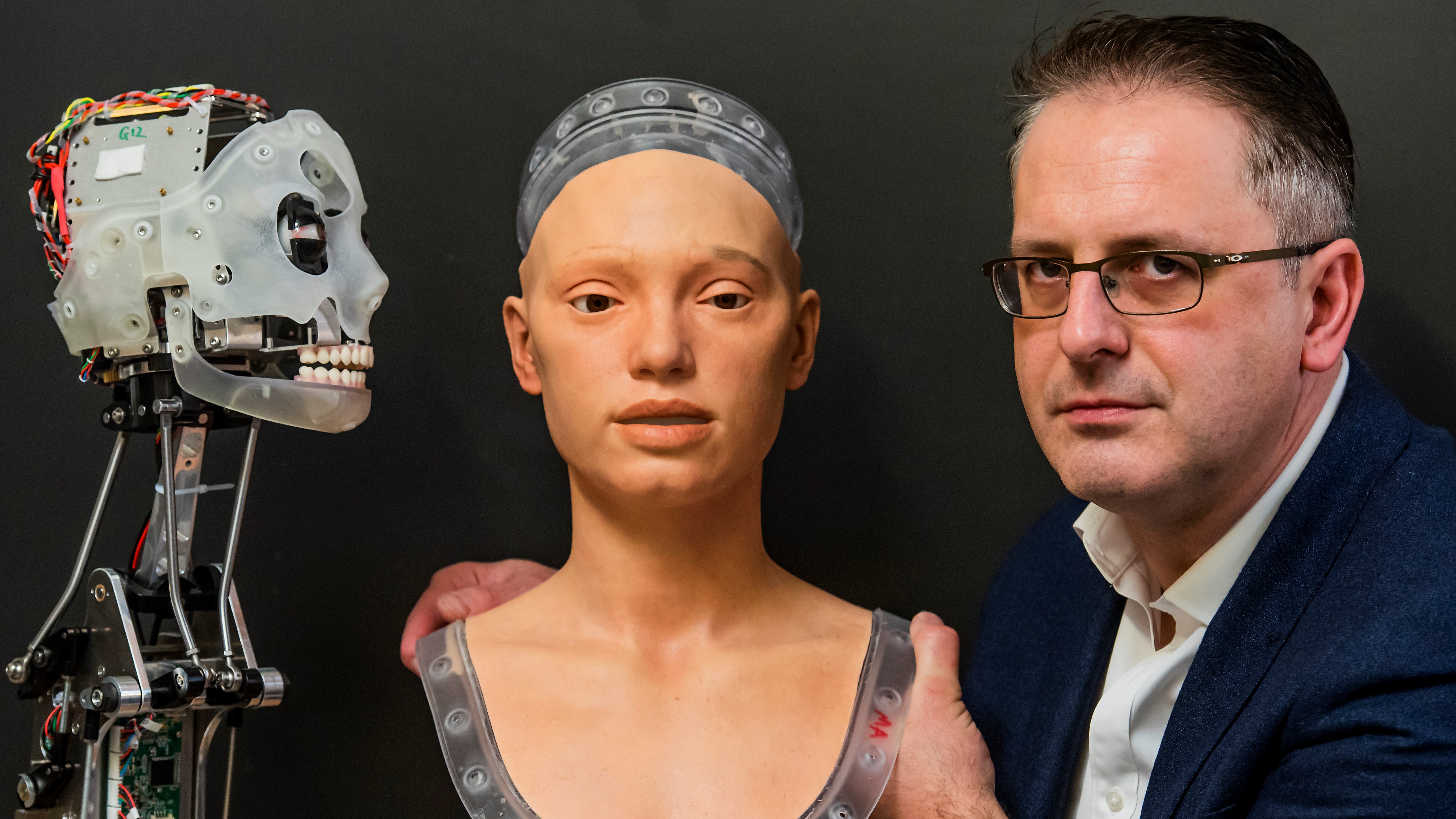Meet Ai-Da, the world's first humanoid robot portrait artist

A life-like robot capable of drawing portraits from real life, Ai-Da is an artist and a work of art. Ai-Da ‘sees’ through a camera in her eye and responds without human intervention, isolating her subject from the background, interpreting it and drawing it by hand. Her preferred medium is pencil or ink (and her creators hope she’ll soon be able to paint as well).
“I didn’t have an epiphany,” art director Aidan Meller, who conceptualized Ai-Da, tells TechRadar. “It came out of a number of things. I’ve been involved in the art world for years, but one thing I wasn’t involved in was the creation of art. I decided that on the 20th anniversary of my involvement in art, I wanted to get involved in creating it.”
Meller began considering the idea of an AI artist while playing with Lego with his 11-year-old son.
“There I was, holding a machine in my hand, and it made me wonder if it was possible for them to be creative,” he says.
Ai-Da, named after computer programmer Ada Lovelace, is the result.
“She interrogates the subject that she sees, and we can vary that algorithm tremendously,” Meller says. “The style can be very experimental, or it can create very tight drawings, or it can be quite abstract.”
Building Ai-Da
Ai-Da doesn’t just draw – she’s also a performance artist. Her body was built by UK-based robotics company Engineered Arts, using the company’s expressive RoboThespian robot body, which is specifically designed for performances in public spaces. Her Mesmer head is finished with silicone skin, 3D-printed teeth and gums, and integrated eye cameras.
Sign up for breaking news, reviews, opinion, top tech deals, and more.

The seven-month build was an intense process – and an expensive one. Meller put his own money into the project, but it was also funded by pre-selling art for her first show, Unsecured Futures.
“We’ve sold over £1 million worth of artwork,” Meller says.
“There were 10 people at Engineered Arts, 15 people programming the AI for creating art at Oxford University and Goldsmith’s College in London, and two people at the University of Leeds doing the arm,” says Meller.
Speaking for herself
Ai-Da’s first exhibition will launch on May 9, but first she’ll take to the stage at Oxford University to give her own press conference – responding to questions and interacting with the audience. She will also perform an homage to Yoko Ono's performance work Cut Piece.
“She did a very influential piece where she sat on the stage, and people came up and cut pieces of her clothing away in a statement about the perception of the female body,” Meller says
Ai-Da's performance will be the opposite: “Ai-Da will be on stage, and people will put clothes on her until you can’t see her at all.”

The aim is to highlight how little we understand the AI systems we’re coming to rely on, which are often black boxes.
“We want to push the boundaries of what AI can do,” says Meller. “We’re using her to question how we are using AI today – are we just using it for profit, where it can have a damaging impact on humans and lower the quality of life for animals, for example, or are we using it for good?"

Cat is TechRadar's Homes Editor specializing in kitchen appliances and smart home technology. She's been a tech journalist for 15 years, having worked on print magazines including PC Plus and PC Format, and is a Speciality Coffee Association (SCA) certified barista. Whether you want to invest in some smart lights or pick up a new espresso machine, she's the right person to help.